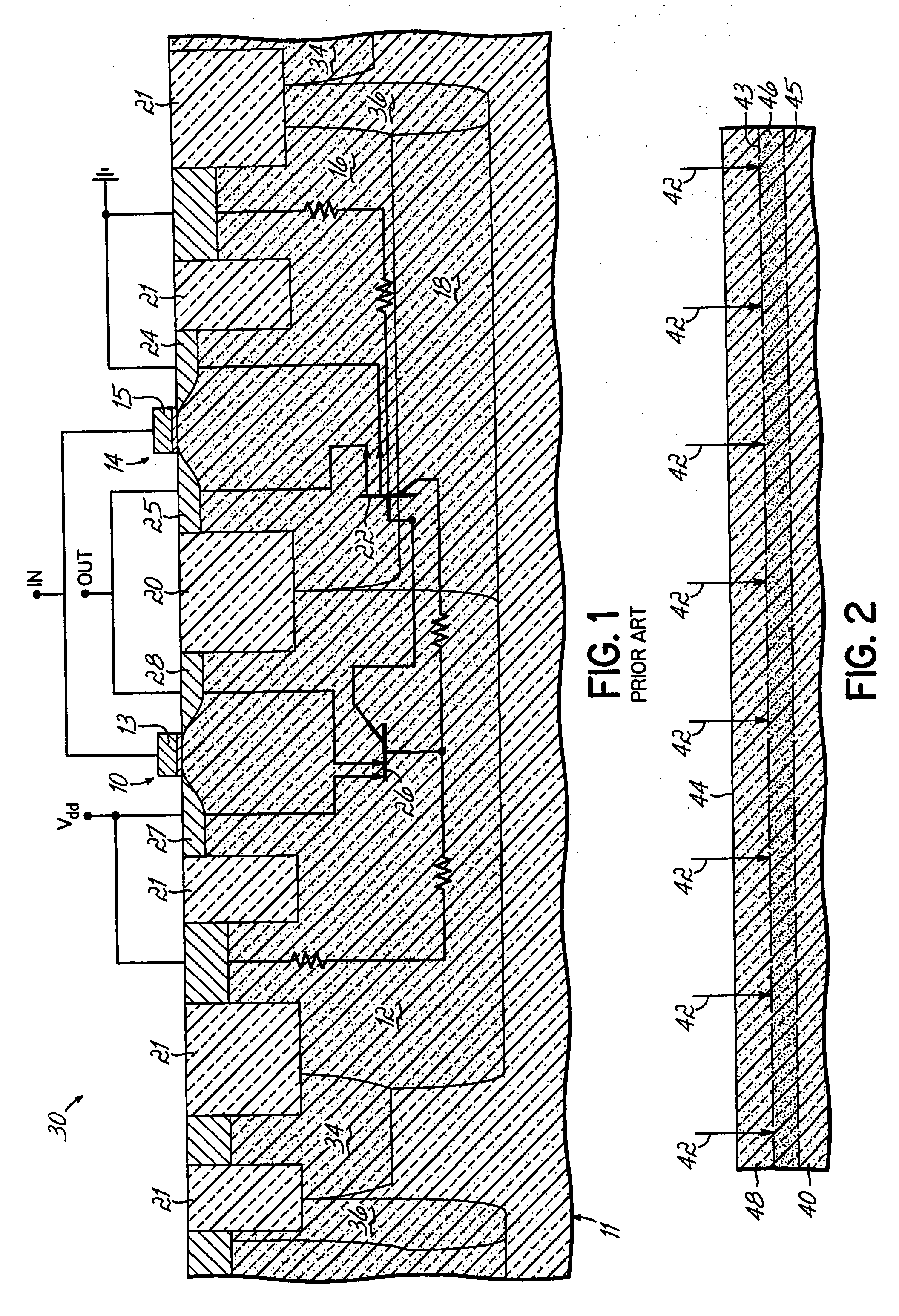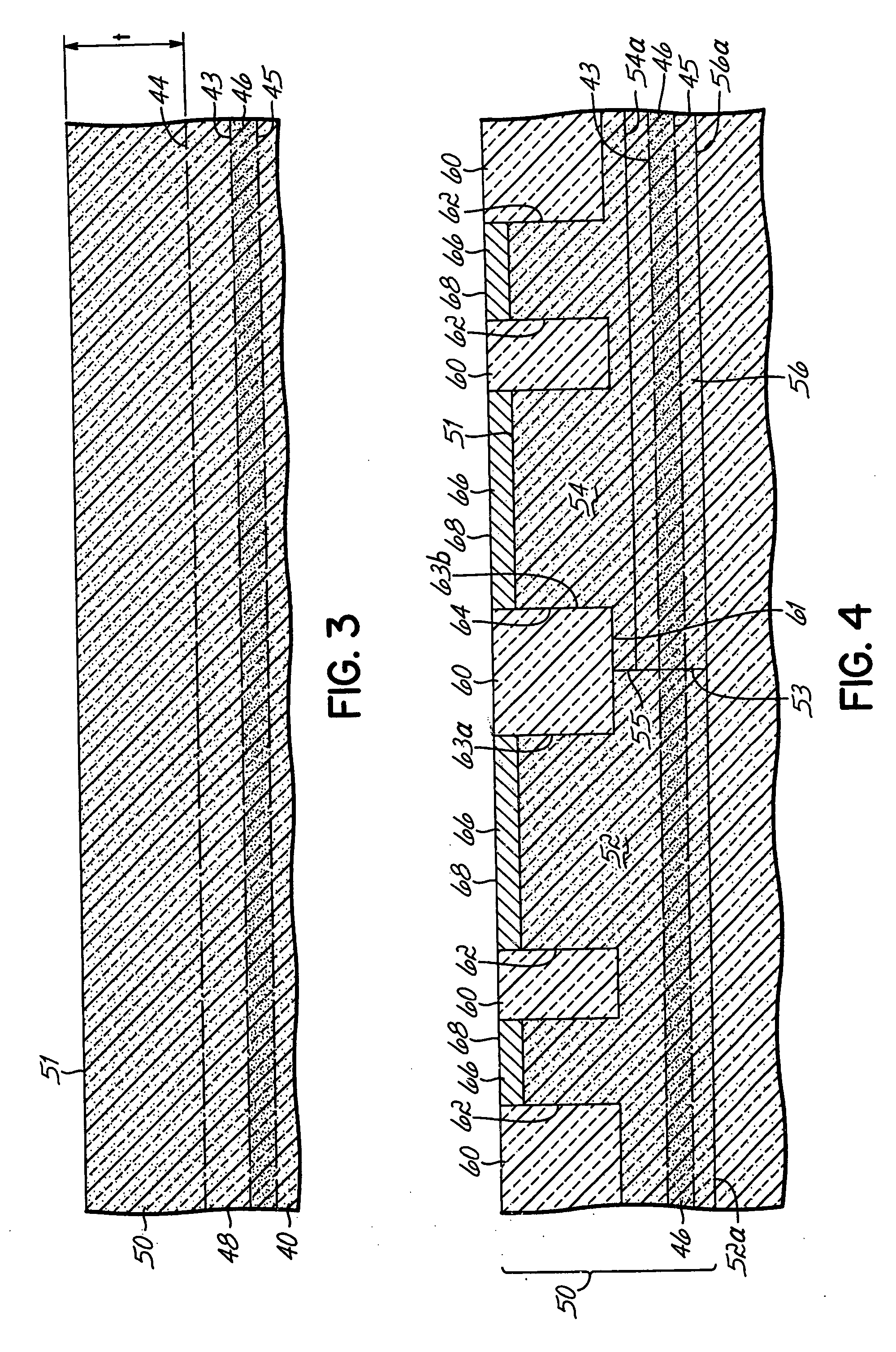Methods and semiconductor structures for latch-up suppression using a buried damage layer
a technology of damage layer and semiconductor structure, which is applied in the direction of semiconductor devices, basic electric elements, electrical equipment, etc., can solve the problems of bulk cmos devices that fail, circuits cannot be easily replaced, and significant issues of bulk cmos technologies, so as to improve latch-up immunity or suppression, suppress the latch-up of bulk cmos devices, and retain cost effectiveness
- Summary
- Abstract
- Description
- Claims
- Application Information
AI Technical Summary
Benefits of technology
Problems solved by technology
Method used
Image
Examples
Embodiment Construction
[0017] The present invention provides a buried damage layer of controlled crystalline defects formed in the base regions (N-well and P-well) of dual-well and triple-well bulk CMOS devices. The buried damage layer limits the effect of the vertical parasitic NPN structure and the lateral parasitic PNP structure responsible for latch-up in such bulk CMOS devices. The invention is advantageously implemented in the context of bulk CMOS devices where pairs of N-channel and P-channel field effect transistors are formed adjacent to each other in a P-well and an N-well, respectively, and the P-well is isolated from the N-well by a shallow trench isolation (STI) region. In a triple-well structure, the damage region may be formed through the N-well and N-band with minimal encroachment upon the junction between the N-well and P-well, which is believed to degrade the gain of the lateral parasitic PNP structure 26 (FIG. 1) while maintaining low-leakage characteristics. The buried damage layer of ...
PUM
 Login to View More
Login to View More Abstract
Description
Claims
Application Information
 Login to View More
Login to View More - R&D
- Intellectual Property
- Life Sciences
- Materials
- Tech Scout
- Unparalleled Data Quality
- Higher Quality Content
- 60% Fewer Hallucinations
Browse by: Latest US Patents, China's latest patents, Technical Efficacy Thesaurus, Application Domain, Technology Topic, Popular Technical Reports.
© 2025 PatSnap. All rights reserved.Legal|Privacy policy|Modern Slavery Act Transparency Statement|Sitemap|About US| Contact US: help@patsnap.com



